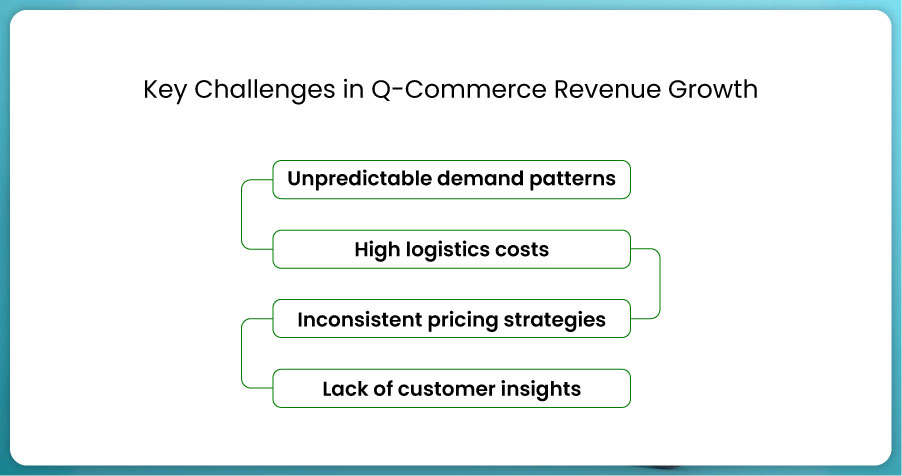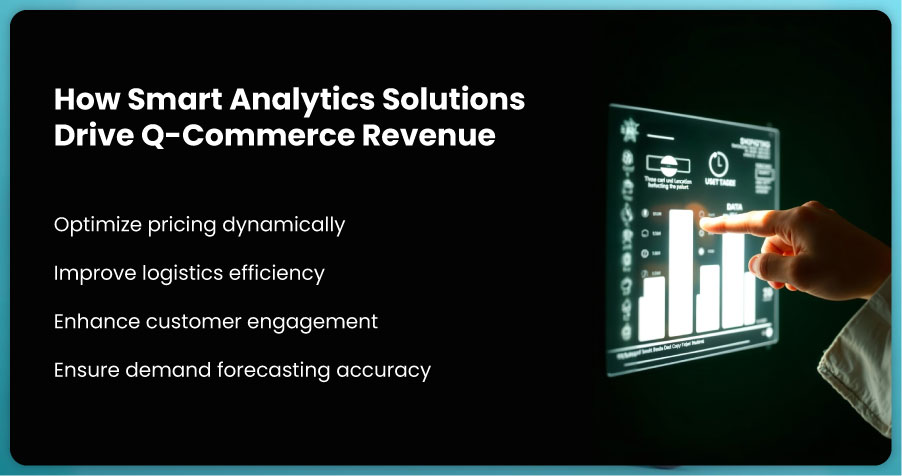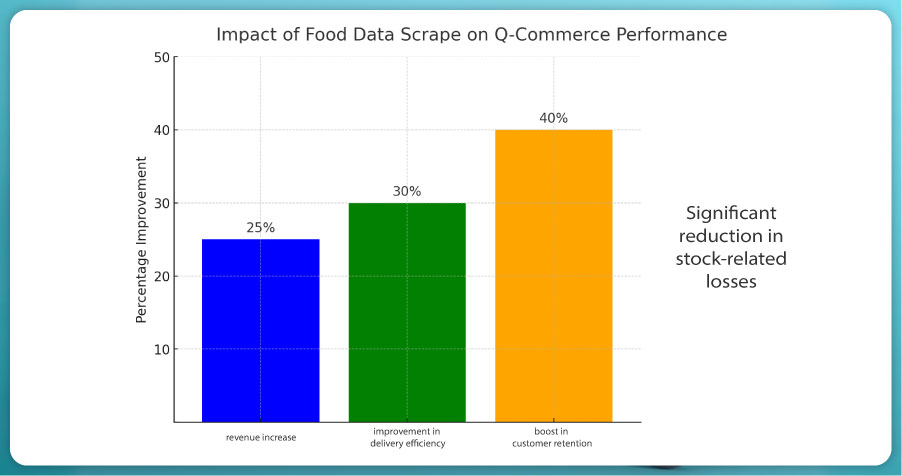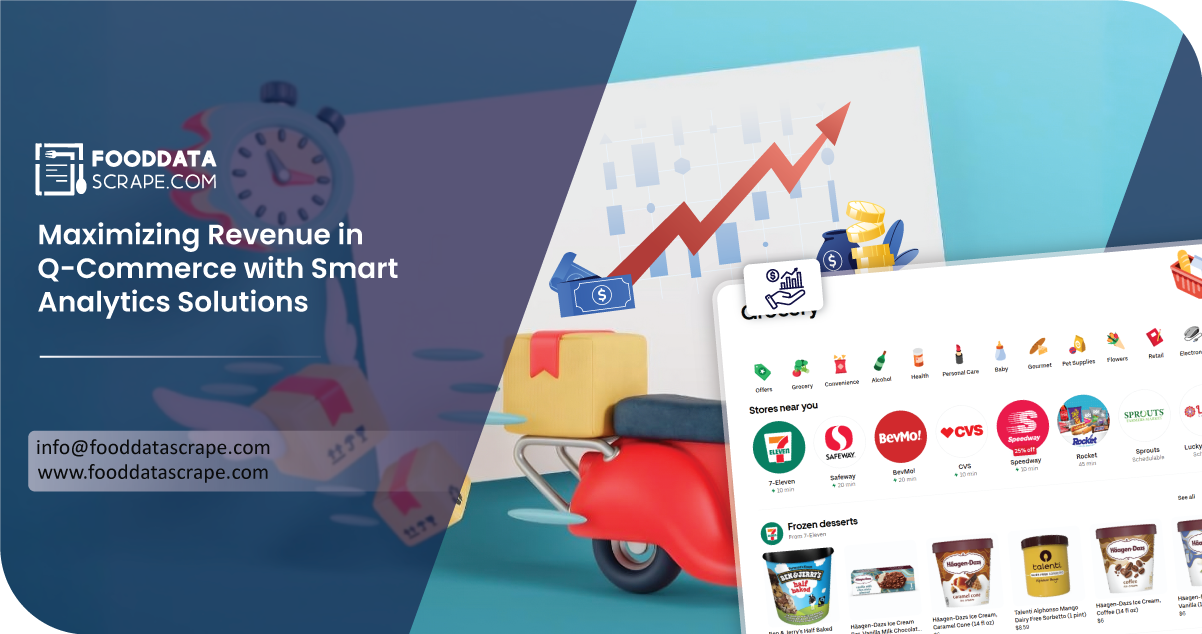Key Challenges in Q-Commerce Revenue Growth

- Unpredictable demand patterns affecting inventory management
- High logistics costs reducing profit margins
- Inconsistent pricing strategies leading to lost opportunities
- Lack of customer insights affecting repeat purchases
How Smart Analytics Solutions Drive Q-Commerce Revenue

By integrating AI-powered analytics, businesses can:
- Optimize pricing dynamically to maximize profitability
- Improve logistics efficiency to cut operational costs
- Enhance customer engagement with personalized recommendations
- Ensure demand forecasting accuracy to prevent stockouts and overstocking
How Food Data Scrape Helps Q-Commerce Businesses Increase Revenue

1. AI-Powered Dynamic Pricing Strategies
Real-time pricing analytics help businesses:
- Monitor competitor pricing and adjust rates instantly
- Optimize discounts and promotions to maximize sales
- Implement demand-based pricing models for higher revenue
2. Smart Route Optimization for Cost Savings
Efficient logistics reduce costs and improve margins. Our AI-powered logistics analytics help:
- Optimize delivery routes for reduced transit times
- Minimize last-mile delivery expenses using predictive analytics
- Enhance order fulfillment rates through real-time tracking
3. Personalized Customer Insights & Retention Strategies
Customer engagement is crucial for repeat purchases. Our analytics solutions help:
- Segment customers based on preferences and buying behavior
- Recommend personalized products and promotions
- Improve retention through loyalty-driven marketing strategies
4. Data-Driven Inventory Optimization
Accurate demand forecasting reduces stock-related losses. Food Data Scrape’s inventory analytics allow businesses to:
- Optimize stock levels to prevent losses
- Reduce wastage and deadstock through predictive modeling
- Ensure seamless supplier coordination for continuous availability
Case Study: How Food Data Scrape Helped a Q-Commerce Business Grow Revenue

A leading Q-commerce company partnered with Food Data Scrape, achieving:
- 25% revenue increase due to AI-driven pricing strategies
- 30% improvement in delivery efficiency with optimized logistics
- 40% boost in customer retention through personalized marketing
- Significant reduction in stock-related losses with demand forecasting
Future Trends in Q-Commerce Revenue Growth

1. AI & Machine Learning for Revenue Optimization
AI-driven analytics will help businesses make real-time, data-backed revenue decisions.
2. IoT-Based Inventory Management
IoT sensors will provide real-time insights into inventory movement and optimize stock availability.
3. Blockchain for Secure Transactions
Blockchain will enhance pricing transparency and prevent fraud in Q-commerce.
4. Hyper-Personalization with Big Data
Advanced customer analytics will provide tailored shopping experiences to drive conversions.
Client’s Testimonial
"With smart analytics, we optimized our inventory management and saw a 20% boost in revenue within months! The ability to track customer preferences and purchasing patterns has given us a competitive edge. Our logistics are now more efficient, and stock shortages have significantly reduced. This data-driven approach has helped us scale our operations seamlessly while improving customer experience and overall business performance."
— David, Chief Data Officer
Final Outcomes:
To maximize revenue, Q-commerce businesses need smart analytics solutions. Food Data Scrape provides AI-powered insights to optimize pricing, enhance logistics, streamline inventory management, and improve customer engagement. With the Grocery Price Monitoring Dashboard , businesses can track price fluctuations and stay competitive. Investing in data-driven strategies ensures long-term profitability and competitive advantage.



















































































